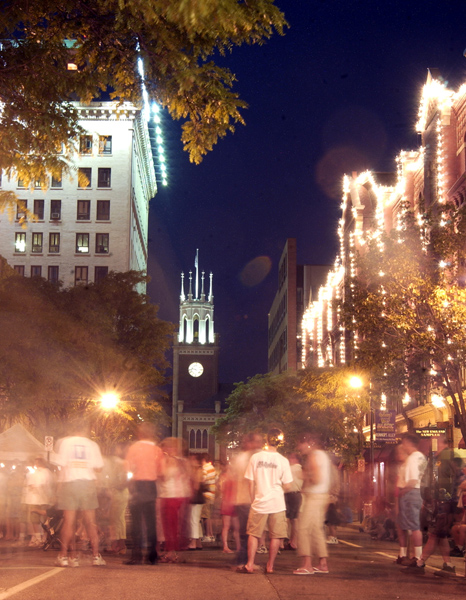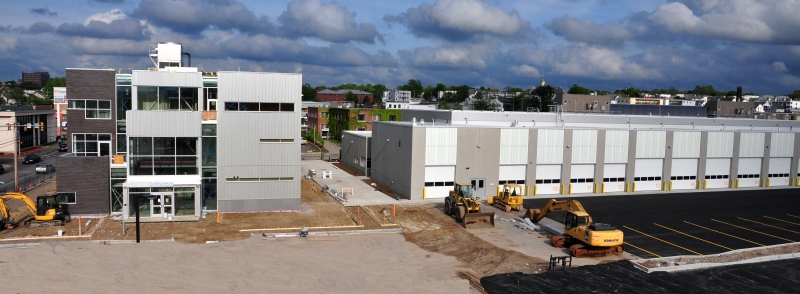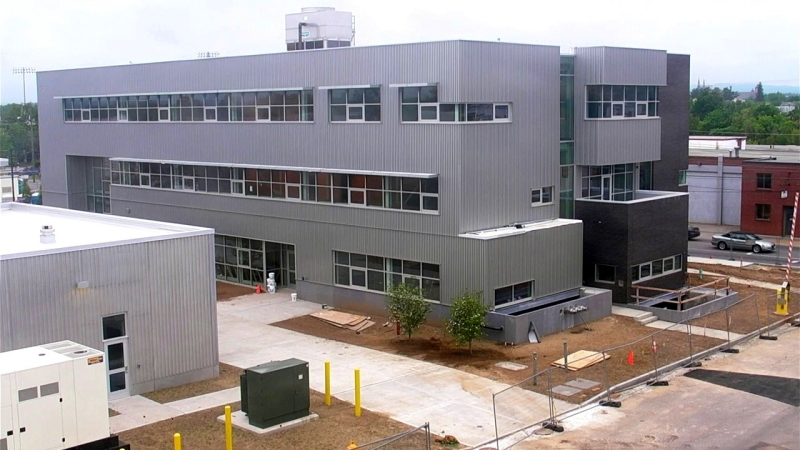I kind of agree, maybe Hanover street, although the nicest, is not the best. Citizens Bank parking garage is a big thing, and to block access would be bad.
Maybe converting a street that is not as needed or has no major parking lots to a pedestrian only may be the way to go, or creating something new. It may not be the nicest street, but improvements can come or could be done when pedestrian friendly improvements are made.
Depot St., Old Granite St., Maybe Lowell St. if access to all the parking lots are form Concord St. only. Maybe Manchester is just not the best city for pedestrian only streets. Improve what they do have with better pedestrian amenities, more walking paths, nicer sidewalks beyond Elm street, and begin to open up the millyard to more restaurants, shops, and improved sidewalks.
I really think this is still an idea worth pursuing, though it needs more planning and, as Patrick pointed out, it needs more input from neighboring businesses and others affected.
I don't think downtown Manchester has the presence yet to have any sort of festival atmosphere, the kind of thing that exists in Market Square in Portsmouth, on Exchange Street in Portland, or on the Church Street pedestrian Mall in Burlington. The bars and restaurants tend to be packed and the growth of outdoor seating has created more of a nightlife and dining scene downtown in recent years, but there's very little street activity, aside from crowds moving from place-to-place and a couple of food carts.
Creating a full-time pedestrian mall, even just for the summer, would probably create an underwhelming experience and negatively impact neighboring businesses. But I think there's a lot of merit to a one-night-a-week pedestrian mall, and hopefully growing a more festive downtown scene from there. It will probably happen slowly, but if planned thoughtfully and promoted well, I think a Friday night-only pedestrian mall could become a major downtown attraction/destination. The fact that it will be so ephemeral, lasting only one night a week for a couple months, will make it even more special and could make the activity even more concentrated.
It shouldn't be hard to find bands, street performers and food carts to fill a block for one night a week during the summer. And that will be the key--simply closing the street will not create enough of a draw--
it needs to feel more like a festival. During the Baines administration, Hanover Street was shut down for a weekend every summer for the Jazz & Blues Festival, which was very well attended and a huge attraction for downtown Manchester.
Jazz & Blues Festival on Hanover St, sometime in the mid-2000s, photo by James E.D. Cook
The City needs to work with neighboring businesses to ensure that they're on board and that their concerns are met, but creating an atmosphere like the one in that photo--even for one night a week during the summer--would be huge for Manchester, and for the businesses along Hanover St.
I don't think getting to the garage would be a big deal really--it would still be accessible via Manchester St. Granted, that's one-way in the opposite direction, but people can loop around via Concord St, which runs the same way as Hanover. I don't think that's really a big deal, and frankly, there's a glut of downtown parking at night.
The bigger issue will be
promoting activities and events on the pedestrian-only Hanover St, so that businesses there aren't passed over because people aren't driving down Hanover. Some of the restaurants there are destinations in their own right, but shutting down the street will make the whole block a destination if it's done right and promoted well. Giving the weekly event a name would also help to promote it.
I don't think the downtown parks or plazas would work well as places for performers and the like. Unlike all the hardscape in Market Square, the parks and plazas of downtown Manchester are either at the fringe of activity or not lined with restaurants and bars. They also lack the intimacy of Market Square or Hanover St.
Ideally, Hanover St would have a few more bars and restaurants on it, but there are good ones as it is, and creating a once-a-week festival atmosphere there could make it an even more attractive place for restaurants and bars to open. Hopefully, some of the specialty shops along the block would stay open late Fridays as well.
There are a few other spots where a temporary pedestrian mall could work--including even a couple blocks of Elm. Obviously, that would have a bigger traffic impact, but cars could still go around and the concentration of bars and restaurants would be even greater. Depot and Old Granite St could be combined to create a high-profile nightlife and arts area in Gaslight District that would work especially well during events at the Verizon and ballpark. But that area is well behind Hanover St in terms of development, and it's at the fringe of downtown.
Hanover St is intimate, already home to several restaurants, and at the heart of downtown. With street performers and activities, it's easy to imagine a pedestrian-only Hanover St being a boon for businesses on the block, as well as those nearby throughout downtown. It would be harder for that to happen starting from the Gaslight District. But if the pedestrian-only Friday nights on Hanover St is planned, promoted and executed well, I think it could easily take off, and spur additional pedestrian-only areas, such as one in the Gaslight District, in the coming years.




